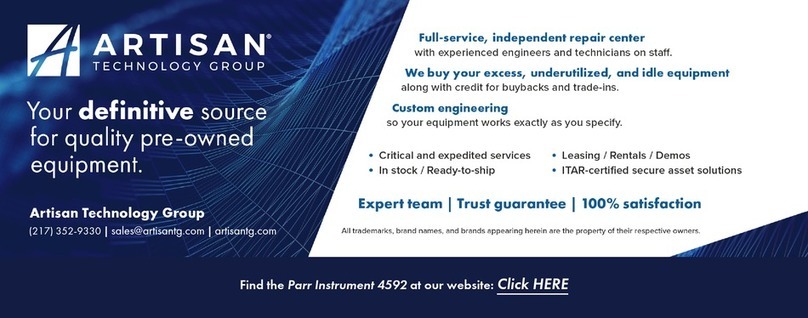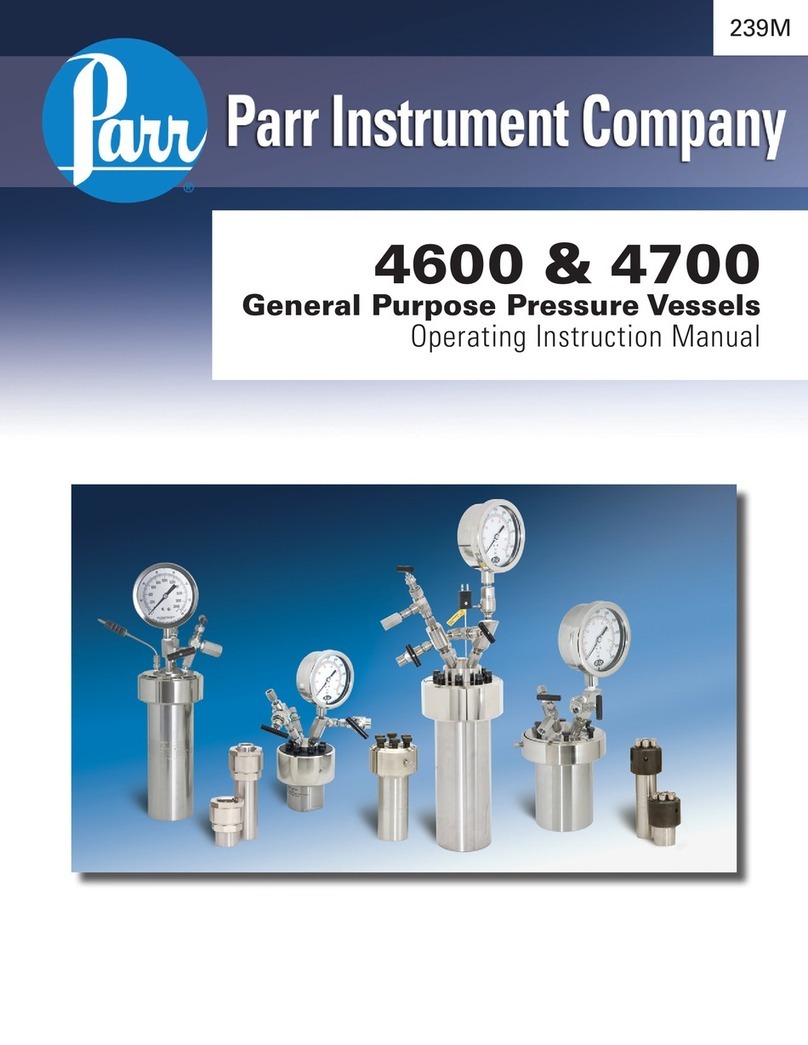
- 5 -
4540 Pressure Reactors
Parr Instrument Company
Intended Usage
This system has been designed for
use as a high pressure reactor system. It
has been designed, built, and tested to strict
physical and electrical standards. However,
it is the user's responsibility to install and
operate it in conformance with local
pressure and electrical codes.
If this equipment is used in a manner
beyond its intended usage, the protection
provided by the equipment may be impaired.
Users Responsibility
All Parr Reactors and pressure
vessels are designed and manufactured with
great care to assure safe operation when
used within their prescribed temperature and
pressure limits.
But . . . the basic responsibility for safety
when using this equipment rest entirely with
the user; who must:
1. Select a reactor or pressure vessel which
has the capability, pressure rating,
corrosion resistance and design features
that are suitable for its intended use.
Parr engineers will be glad to discuss
available equipment and material options
with prospective users, but the final
responsibility for selecting a reactor or
pressure vessel that will perform to the
user’s satisfaction in any particular
reaction or test must rest with the user –
not with Parr.
In exercising the responsibility for the
selection of pressure equipment, the
prospective user is often faced with a
choice between over- or under-designed
equipment. The hazards introduced by
under-designed pressure vessels are
readily apparent, but the penalties that
must be paid for over-designed
apparatus are often overlooked.
Recognizing these criteria, Parr reactors
and pressure vessels are offered in
several different styles, each designed
for convenient use in daily operation
within certain temperature and pressure
limits, using gaskets, closures and other
elements carefully selected for safe
operation within the limits specified for
that design. But in order to preserve the
validity of these designs, all temperature
and pressure limits must be observed,
and no attempt should be made to
increase these limits by making alterations
or by substituting components which are
not recommended by Parr Instrument
Company.
2. Install and operate the equipment within a
suitable barricade, if required, with
appropriate safety accessories and in full
compliance with local safety codes and
rules.
3. Establish training procedures to ensure
that any person handling the equipment
knows how to use it properly.
4. Maintain the equipment in good condition
and establish procedures for periodic
testing to be sure the vessel remains
structurally sound.
Unpack Carefully
Unpack the equipment carefully and
check all the parts against the, packing list. If
shipping damage is discovered, report it
immediately to the delivering carriers. The
vessel, motor, heater, and temperature
controller may be packed separately for
convenience in shipping, but these parts are
easily reassembled. Examine the
components closely for any loose parts or
shipping damage and be sure to check all
layers of packing materials thoroughly so as
not to overlook any parts which might
otherwise be discarded.































